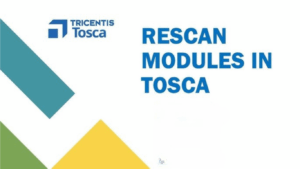The portability testing has the below different types of testing that can be performed.
- Adaptability testing
- Compatibility & co existence
- Installation-ability testing
- Interoperability Testing
- Localisation Testing
- Replaceability Testing
CLICK HERE to read PORTABILITY TESTING- PART 1
1.Adaptability Testing:
Adaptability testing is to test the hardware and software dependency, encapsulation or text convertibility. It is functional test to verify that the software can perform as per expected behaviour in all environments.
2. Compatibility & co-existence:
Testing the compatibility of different software systems to exist in the single environment without affecting each other’s behaviour adversely. This is the issue for advanced systems that share the same components.
3. Installation-ability testing:
Installation ability testing is to test the ability of software to install effectively for its target system in the proper environment. This process may include installation ability procedures, completeness, installation process, customisation and uninstallation.
4. Interoperability Testing:
Interoperability testing includes ability to communicate and execute programs and transfer data among different functional units in a manner that user has no or little knowledge about the various characteristics of those units.
5. Localisation Testing:
The purpose of localisation testing is to test the software to test the local language and culture settings where the software is being used.
6. Replaceability Testing:
Replaceability testing is a procedure of testing the capability of replacing the software component by other software component within a single system.
The main purpose of portability testing is the movability of the software from one operating system or hardware to another.
Examples:
Designing software to run on windows operating system and Mac OSX
Developing an application to run on Google’s Android, Apple’s iOS and Windows operating system. To use an application to Macintosh means to modify the program so that it can run on the MAC environment.
Portability refers to the application to move across the different environments and not just the platforms. Portability is also used to describe the data flexibility. For example to view the data files with formats like PDF or JPEG ,the format depends on the availability of proper software applications. Generally it verifies whether the application is able to fulfil the portability requirements. The defects are reported to the development team so that they can associate with it and fix the defect.
The failures during portability testing can help detecting the defects which were not identified during the unit and integration testing. For Example: An Excel application and a calculator running on the same OS will be compatible with each other as the behaviour of one another will not affect each other. In short the portability deals with the software application with many environments.
One disadvantage of portability testing is the amount of budget to be allotted to this type of testing. As it demands many hardware configurations. Maintenance and providing support to these hardware may be very difficult job and time consuming.
Check your understanding:
- Give some examples of portability testing?
- What are the advantages and disadvantages of portability testing?

































50 Responses
1. Examples of portability testing:
-Gmail app to run on apple ios, android phones, computers with different configurations.
– Software installations like SQL server studio, Quality center, Microsoft windows etc are done on different computers with different software and hardware configurations.
2. Advantages and disadvantages of portability testing :
Advantages:- It prevents defect to enter into production which would if found in production incur big cost and rework.
– End users don’t face any problem on variety of applicable environment and software application works as expected configurations.
-Maintenance and providing support to these hardware may be very difficult and time consuming.
Disadvantages:- Huge mount and budget to be allocated to this type of testing as it demands many hardware c
Disadvantages: Huge mount and budget to be allocated to this type of testing as it demands many hardware configurations.
-Maintenance and providing support to these hardware may be very difficult and time consuming.
1. Examples of Portability testing
– Testing the GotoMeeting app to work on different devices like Mac, Windows, iPhone, iPad, Android, tablets, etc.
– Facebook being able to work with other apps by sharing data.
2. Advantages of Portability testing:
-The failures during portability testing can help detect the defects which were not identified during the unit and integration testing.
– Software application able to move across different environments.
– Describes data flexibility.
-Make it as cost effective as possible.
Disadvantages of Portability testing:
– Amount of budget to be allocated.
– Demands many hardware configurations.
– Maintenance and providing support for all the hardware is difficult and time consuming.
– Facebook being able to work with other apps by sharing data.
The above is not an example of portability testing. It is an example of Interoperability testing.
Another example of Portability testing could be MS Office in different OS.
1. Example of Portability testing – open the Skype on different browser like chrome, firefox, mozilla etc. Or different operating system.
2. Advantage of portability testing is that the failures during portability testing can help detecting the defects which were not identified during the unit and integration testing.
Disadvantage of portability testing is the amount of budget to be allotted to this type of testing. As it demands many hardware configurations. Maintenance and providing support to these hardware may be very difficult job and time consuming.
Portability testing can be explained using cloud application. One can access the information uploaded to cloud any time anywhere using computer, laptop, smart phones etc. The ease of accessing this information is made possible due to the portability of information without conflicting with other applications running on the system. Portability also explains data’s flexibility to be viewed in different formats like pdf, html,image etc.
Advantages of Portability testing: it has the ability to use may be three to four types of operating system, same no of browser versions or even more and databases versions to find the bugs at the same time. On the other hand this kind of testing can prove to be very expensive and quite repetitive for the testers which can result in loss of interest and can bottleneck the work load to prepare and support all testing environments are main disadvantages of Portability testing.
Designing software to run on windows operating system and Mac OSX.
Developing an application to run on Google’s Android, Apple’s ios and windows operating system.
The advantages and disadvantages of portability testing are:
It refers to the application to move across the different environments and not just the platforms and the failures during portability testing can help detecting the defects which were not identified during the unit and integration testing.
The disadvantage of portability testing is the amount of budget to be allotted to this type of testing. The maintenance is very high and hardware is involved so more time consuming also.
Examples of portability testing: application or software designed to run both on laptop and mobile.
Advantage:
End users don’t face any problem on variety of applicable environment and software application work as expected
Disadvantage:
it involves too much time ,effort and cost as different hardware configuration needs to be there available for testing.
PORTABILITY TESTING 2
1. Some examples Windows on different computers, MacOS on different Apple devices.
2. Advantages: tests and looks for bugs before the software is sent to the user. Disadvantages: time consuming and is a very difficult job to do.
1.Running YouTube on mac, android, windows, laptop, smart phones, tablets etc. and in different operating systems or apps running on different browsers e.g. google chrome, IE, Firefox etc.
2. Advantages are End users don’t face any problem on variety of applicable environment and software application work as expected.
Disadvantage- it involves too much time ,effort and cost as different hardware configuration needs to be there available for testing.
This article explains the various types of Portability testing:
Adaptability testing
Compatibility & co existence
Installation-ability testing
Interoperability Testing
Localisation Testing
Replaceability Testing
1. Examples of Portability testing
– one example is the United Airline website, sometimes it shows differently if you are viewing it from a laptop than from a Smartphone. I have noticed that if you are viewing it from smart phone, you have options to view as in desktop.
-another example is the compatibility of the program in other browsers. Portability testing make sure of the compatibility of program if its opened in different browsers.
2. Advantages of Portability testing:
-detects defects that s not detected from Unit and integration testing
-Application will be able to move across different platforms
-data flexibility
-Cost effective
-Quality software
Disadvantages of Portability testing:
-Budget, could be costly
-needs different hardware configurations for testing
-time consuming
The advantages of portability testing are The failures during portability testing can help detecting the defects which were not identified during the unit and integration testing. it will make the application to move across different environments.
Disadvantage of portability testing is the amount of budget to be allotted,time consuming,very difficult job.
Examples of portability testing are:
1. Software designed to run on Macintosh OS X and Microsoft Windows operating systems.
2.Applications developed to be compatible with Google Android and Apple iOS phones.
3.Video Games or other graphic intensive software intended to work with Open GL and Direct X API’s.
4.Software that should be compatible with Google Chrome and Mozilla Firefox browsers.
1. Examples of portability testing:
Different types of applications that can be ported across multiple platforms and environments such as hardware (Clients, servers, network connectivity devices, input devices, and output devices), software (versions and service packs), browser (types and versions). Some instances are:
Software designed to run on Macintosh OS X and Microsoft Windows operating systems.
Applications developed to be compatible with Google Android and Apple iOS phones.
Video Games or other graphic intensive software intended to work with OpenGL and DirectX API’s.
Software that should be compatible with Google Chrome and Mozilla Firefox browsers
Advantages and disadvantages of portability testing:
• Advantages:
– It prevents defect to enter into production which would if found in production incur big cost and rework. Much time and Effort is required to solve the issue, if arises in different applicable production environment.
– End users don’t face any problem on variety of applicable environment and software application work as expected.
• Disadvantages:
– First disadvantage is that testing same thing again and again makes the work monotonous for testers and tester can lose its concentration while testing.
– Second disadvantage is that too much time is required.
– Third disadvantage is that it involves too much cost as different hardware configuration needs to be there available for testing.
Examples of portability testing:
1: Software design that runs on different operating systems for instance: ms window, apple ios.
2: Data portability, software must runs on different version of the storage files like .pdf, jpeg etc.
Advantages and disadvantages of portability testing:
Advantage: Portability testing secure the future of the software that continue the use the specific software and fulfill all the requirement of the clients.
Disadvantage: Portability testing consume not only lot of time and energy of the tester but also it cost more money because it need all kinds of hardware and software components.
1)Applications designed to run on Apple iOS, google android devices, windows 10, video games, Facebook
2)Advantage easy to identifying defects even during the process of installation.. it is the added value of after performing it installation errors will not influence
3)Disadvantage : Higher budget, workloads, requires lot of time
Examples for portability testing are mobile application , Web application ,hardware compatibility and so on.
The main purpose of portability testing is the movability of the software from one operating system or hardware to another.
One disadvantage of portability testing is the amount of budget to be allotted to this type of testing. As it demands many hardware configurations. Maintenance and providing support to these hardware may be very difficult job and time consuming.
Applications which works fine with Mac, IOS, android, Windows etc. like any websites, browsers.
Disadvantage:
• the amount of budget to be allotted to this type of testing is very high. As it demands many hardware configurations.
• Maintenance and providing support to these hardware configs may be very difficult job and
• It is time consuming.
Advantages:
• It tests the flexibility of software to move across different environments and
platforms.
• It can save on costs by ensuring that the software works for entire life system
• data flexibility
• Quality software
1.Developing an application to run on Android, Apple’s iOS and Windows operating system. For eg, job portal, Railway reservation ,airline reservation etc.
2.Advantages: it helps in detecting the defects which were not identified during the unit and integration testing.
Disadvantage of portability testing is the amount of budget to be allotted to this type of testing, As it demands many hardware configurations. Maintenance and providing support to these hardware may be very difficult job and time consuming.
Some examples of Portability testing are:
• Software application to run on Windows 10 and Mac operating systems.
• Compatibility of Software on Microsoft Edge and Google Chrome browser.
• Software application to run on Apple and Android devices
• Software designed to run on Windows 7 and Linux operating
There are various advantages and disadvantages of Portability testing. Some of the Pros and Cons are as followed:
Pros:
• This test confirms if two or more different components can interact.
• This test can catch missed bugs during Unit and Integration testing.
• This test confirms the adaptability of the software across multiple Browsers and OS.
Cons:
• This test is costly to deploy and maintain multiple configurations and OS, and space for testing.
• This test required repetition testing and a lot of attention and patience.
• This testing is not suitable for testing cycle with time constraint.
The example of Portability Testing is Yahoo,Verizon Wireless,Facebook working on different devices like mac,tabletscomputres etc, browsers chrome, internet explorer and operating system.
The advantage of portability testing is it deals with the software application with many environment and platforms.
Disadvantage is the cost is high and time consuming.
Examples of portability testing:
Game, facebook, gmail etc these are some of the example are designed to work on mobile, laptops, tablets. Software installations like SQL server studio, Quality center, Microsoft windows etc are done on different computers with different software and hardware configurations.
2.Advantage:It can detect the defects which can not be identified during Unit and Integration testing.
Disadvantage:It is very expensive and time consuming process.
Examples of portability testing are: server, network, connectivity on devise, operating system, browser.
The advantage is that it can move across many platforms and not just the environment.
The disadvantage is that this type of testing is very costly with a higher budget.
1. Check to see if the software running on Windows also run on MAC machine. Check to see if the software acts the same when using on computer or mobile.
2. Advantage: It prevents defect to enter into production which would if fund in production incur big cost and rework. Much time and effort is required to solve the issue, if arises in different applicable production environment.
Disadvantage: testing the same thing can be monotonous for testers and they can lose their concentration while testing. This type of test requires too much time. It also involves too much cost as different hardware configuration needs to be there available for testing.
1. Examples of Portability testing
– Testing the instagram app on mobile devices and different computer systems.
2. Advantages of Portability testing:
-The failures during portability testing can help detect the defects which were not identified during the unit and integration testing.
– Software application able to move across different environments.
– Describes data flexibility.
-Make it as cost effective as possible.
Disadvantages of Portability testing:
– Amount of budget to be allocated.
– Demands many hardware configurations.
– Maintenance and providing support for all the hardware is difficult and time consuming.
Examples of portability testing the applications to run on phones computers with different configuration like Facebook ,Gmail.
Advantage : The end user does not face any problems and the software works as per client requirement.
Disadvantages : A huge amount is allocated to this type of testing.
1. Some examples of Portability testing are:
– Software application to run on Windows 10 and Mac operating systems.
– Compatibility of Software on Microsoft Edge and Google Chrome browser.
– Software application to run on Apple and Android devices
– Software designed to run on Windows 7 and Linux operating
2. Advantages:
– It tests the flexibility of software to move across different environments and
platforms
– The failures during portability testing helps detect the defects which could not be
identified during unit and integration testing.
– It can save on costs by ensuring that the software works for entire life system.
Disadvantages:
– It can turn out to be expensive due to many hardware configuration demands.
– It can be time consuming and difficult job to maintain and support the hardware.
1. Examples of Portability testing:
Applications like gaming apps, shopping apps, social communication apps etc developed to be compatible Google Android and Apple iOS phones.
Software that should be compatible with Google Chrome ,safari,internet explorer, Firefox browsers.
Installation and Installation of softwares on different devices.
2. Advantages of Portability testing:
a. Checks whether the software can perform as per expected in all environments.
b. Checks the ability of the software to communicate and transfer data among different functional units.
c. It can help detecting the errors which were not identified during the unit and integration testing.
Disadvantages of Portability Testing:
a. This type of testing needs more amount of budget.
b. It is time taking procedure as it is a repetitive process.
c. Requires many hardware configurations hence maintaining them will be difficult.
Give some examples of portability testing?
Software design to run on windows operating system and Mac OSX. Developing an application to run on Google’s Android, Apple’s iOS. GOTO meeting, Facebook working on different devices like tablet, computers, smartphone etc.
Advantage: The main purpose of portability testing is the movability of the software from one operating system or hardware to another. Portability is also used to describe the data flexibility. The failures during portability testing can help detecting the defects which were not identified during the unit and integration testing
Disadvantage of portability testing is the amount of budget to be allotted to this type of testing. As it demands many hardware configurations. Maintenance and providing support to this hardware may be very difficult job and time consuming.
Give some examples of portability testing?
opening facebook page on MacBook, iPhone, Samsung phone, etc.
What are the advantages and disadvantages of portability testing?
advantage: end user is stress free and software works as the requirements
disadvantage: time consuming and also budget.
Microsoft word and word pad compatible with each other as the behaviour of one another will not affect each other. In short the portability deals with the software application with many environments.
One disadvantage of portability testing is the amount of budget to be allotted to this type of testing. As it demands many hardware configurations. Maintenance and providing support to these hardware may be very difficult job and time consuming.
Give some examples of portability testing?
– An email account should be accessible on windows computer , Android phone , I phone as well as Mac computer.
– An online banking application should work on different browsers like safari, google etc.
– An upgrade or change in hardware configuration should not affect data storage or usage.
What are the advantages and disadvantages of portability testing?
Advantages:
– Uninterrupted/unrestricted access.
– Easy transition between devices, browsers, environments etc.
– More long term product.
Disadvantages:
– Probably more time consuming.
– Will require larger manpower therefore more costly.
– May need consistent support and maintenance.
1. Examples of portability testing are: Usability of facebook in the phones with different operating system like ios and android, usability of toad data point in computer devices with Microsoft or linux operating system, google search engine usability in high speed internet in the U.S. and that of low speed internet in a third world country.
2. Advantages:
a. Portability testing ensures the data flexibility.
b. The failures during portability testing can help to detect the defects which were not identified during the unit and integration testing.
c. Cost reduction throughout the lifespan of the software application.
Disadvantages:
a. The amount of budget to be allocated as it demands many hardware configurations; maintenance and providing support to these hardware maybe a difficult and time consuming job.
Examples of portability testing
1.gmail or Facebook app that opens in windows OS ,Google Android and Apple Mac
2.Game app that has designed to work in mobiles, laptops and tablets
Advantages of portability testing
Portability testing ensures that the software behavior of the software is same and as expected in all the environments
Tests the compatibility of the software by testing if the software is compatible with other softwares in the environment without disturbing each other behavior adversely
It identifies the defects that are missed out in unit and integration testing
Disadvantage of portability testing
Amount of budget allotted to portability testing is huge as it requires many hardware configurations.maintenance and support for such hardware is expensive and time consuming.
1) Examples of portability testing:
Software designed to run on both Windows 7 and Macintosh operating systems.
Applications designed to run on Apple IOS and google android devices.
Software designed to be compatible with Microsoft Edge browser and Google Chrome browser.
Video games designed to run on Windows 10 and Apple Macintosh operating systems.
Software designed to run on Windows 7 MySQL server and Macintosh Oracle database.
Installation of software on Windows 10 and Windows XP operating systems.
Uninstallation of software on Macintosh and Linux operating systems.
2) Advantages of Portability testing are: It helps in identifying the dependencies between multiple components.
This testing is especially useful in large systems, which have several subsystems that interact with one another.
This testing is preferred when the customers of a product use multiple operating systems with multiple browser versions.It also helps to eliminate the propagation of errors between multiple systems.
Disadvantages of Portability testing are: Portability Testing is a repetitive process which means testers can lose their focus during testing. This testing is generally not preferred when there is a time constraint on the software testing cycle.Execution of portability tests in a multi-user environment can be very tricky. Also, it requires a lot of data workload for the testing to be successful.
Examples of portability testing are running the software in windows and Mac, running game Apps in windows system and Mac.
Advantages of portability testing are it is useful for clients who want the software to perform well in different operating systems. Disadvantages is time constraint and budget involved in it.
Some examples of portability testing is a software that can run across different internet browsers, like Chrome and Firefox.
Benefits of the portability testings:
-it makes sure data is transferred between different platforms.
-it helps identify errors which were not apparent in integration and unit testing
Drawbacks of portability testing:
-its a repetitive tasks so testers can get tired
-time consuming
– requires a substantial budget
1) Adaptability testing: This is to test adaptability of the software to the new environment and it suppose to work the way we expect.
2) Compatibility and coexistence test: To test the software compatibility with other software’s exist in the same system and they work independently without affecting each others behavior.
3) Installation and ability testing: This is to test the ability of the software to install in different environments.
4)Localization testing: It is to test the software to test the local language and cultural language where the software being used.
5) Interoperability test: It to test the the ability to communicate, execute and transfer data among their functional units in manner that user has no or little knowledge about this.
5) Replaceability testing: test the ability to replace the software component by other software component in the system
The main advantage of the portability testing is to transfer the software to different environments and make it work, sometimes the portability testing failure can help to fix the errors by developers which are not identified during unit and integration testing.
The main disadvantage is , it is very expensive and time consuming.
Portability Testing examples:
-any software application like apps on phones run on ios and andriod phones, tablets, Ipads. Portability testing makes sure the completed application working properly on different type of software and hardware environments. Whatever the configuration of the system software application needs to work as expected. It could be anything like web based application or windows based application.
Advantages:
identifies the defects which are not found in Unit and Integration testing.
Disadvantages:
unlike other testings portability testing has to have many hardware features in system which are very expensive to maintain and support .
Give some examples of portability testing?
using a game application, in Android, PC, apple etc,
What are the advantages and disadvantages of portability testing?
Advantages is that its useful in large systems, when its used in multiple operating systems, and different environments,
Disadvantages is its time consuming , cost consuming, and very hard to accomplish.
Designing software to run on windows operating system and Mac OSX.
Developing an application to run on Google’s Android, Apple’s ios and windows operating system.
The advantages and disadvantages of portability testing are:
It refers to the application to move across the different environments and not just the platforms and the failures during portability testing can help detecting the defects which were not identified during the unit and integration testing.
The disadvantage of portability testing is the amount of budget to be allotted to this type of testing. The maintenance is very high and hardware is involved so more time consuming also.
Examples of portability testing is to see if the application such as Facebook or Gmail is accessible over different environments such as Microsoft or over a mobile device.
Advantages of portability testing is that it can save costs for the entire life of the system.
Disadvantages of portability testing is it is costly and requires a lot of maintenance , thus requires a lot of time.
1. Adaptability testing: Testing the software in various environment
2.Compatability testing: Testing different types of software in single environment whether it is working without affecting each other’s behaviour.
3. Installation testing: Testing the installation of the software
4.Interoperability testing: The software can communicate and execute the programs and transfer the data among the functionalities
if the user has little or no knowledge about the software
5.Localisation testing: Testing the software in local language and culture settings where the user is going to use it
6.Replacability testing: Testing the software by replacing the software components.
Disadvantages of Portability testing:
1. High amount of budget required to test the software in various environments.
2. Maintainence and the support to the various hardware or software configuration is very difficult.
1.) Some examples of portability testing are as follows:
-Adaptability testing is a test in which the hardware and software dependency is tested to verify that the software can perform as expected in all system environments.
-Compatability & co-existence testing is a test in which the compatability of different software systems is tested in the same environment without affecting each other.
-Installation ability testing is a test that tests the softwares ability to install properly in its target system, this process includes the installation process, completeness and uninstallation.
-Interoperability testing checks the ability to communicate, excute programs and tranafer data among different functional units in a manner that the user has no knowledge of.
-Localisation testing is a method to test softwares local language and culture settings where its being used.
-Replaceability testing is a procedure of testing the cabaility of replacing the software component by other software within the system. The main purpose is to test the movability of software from one system or hardware to another.
2.) Advantages of portability testing is it helps ensure the past, present and future use of the software. It saves cost on the complete life of the system as a whole due to assuring adaptability, also it is useful in large systems or systems with multiple softwares working in unison. Disadvantages are the amount of budget and time to be given to this type of testing is hard to gauge due to its nature. It is also a high maintenance type of testing.
1. Developing an application to run on Android, Apple’s iOS and Windows OS
2. Advantage of portability testing is that the failures during portability testing can help detect the defects which were not identified during the unit and integration testing. Also, testing the flexibility of the software to move across different environments.
Disadvantage of portability testing is the amount of budget to be allotted and that it is time consuming.
1. Examples of portability testing: -testing Facebook’s compatibility and usability with different browsers such as Google Chrome, Safari, and Microsoft Edge. -Testing the amazon shopping app’s compatibility, usability, and installation ability on both iPhone and Android. -Testing Google Chrome’s compatibility, usability, and installation ability on both Windows operating system and Mac OSX.
2. The advantages of portability testing include: -Defects may be uncovered that were not identified during integration and unit testing. -Evaluation of adaptability, compatibility, installation ability, interoperability, localization, replaceability, mobility, and usability with different system environments.
The disadvantages of portability testing include: – Budget required due to the numerous hardware configurations. -Time consumption and difficulty due to the support and maintenance required.
1.Example of portability testing is application or software should run on browser and mobile app.ex. Shopping sites
and also should run on different operating systems.
2.Advantage is failure during portability testing can help detect which are not identified during the unit and integration.
Disadvantage of portability is the time consuming and it demands a lot of hardware, configuration.
1)Portability testing: eg: testing of a product which is well functioning in Windows 7 and measuring its behaviour in Windows 8
2)Advantage-helps to identify dependencies between multiple components.
disadvantage-expensive and time consuming
One example includes testing a product that is well functioning in Windows 7 and measuring its behavior in Windows 8.
The advantage of this testing is that the defects are reported to the development team so that they can associate with it and fix the defect.
One disadvantage of portability testing is the amount of budget to be allotted to this type of testing. As it demands many hardware configurations. Maintenance and providing support to this hardware may be a very difficult job and time-consuming.